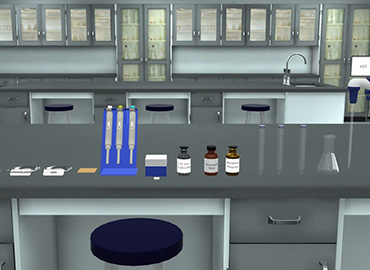In-Vitro Acid Phosphatase for Cell Viability Assay
Biology | Toxicology | Biochemistry | Proteomics | Pharmacology






2.5M+
Active Users Worldwide
80%
Improved Learning Retention
60%
Reduction in Laboratory Costs
The In vitro acid phosphate cell viability assay experiment aims at quantifying the amount of acid phosphatase activity on the cell membrane of viable cells using a microplate reader.
In Vitro Acid Phosphatase cell viability assay using microplate reader.
By the end of this cell viability test experiment, the postgraduate student will be able to:




